It's peak magnolia time again and the first of the cream and crimson beauties are gracing gardens all over Sydney.
If you managed to keep the possums off your magnolia buds this winter head to the Garden Clinic Facebook page and share your magnolia pictures with us.
And there is still lots to do in the winter garden, so let’s get into it!
Winter is all about preparing roses. And now that the winter soltice has past it’s time to get those unruly roses under control. At this time of year,
if you’re not planting roses, you’re pruning them and if you’re not pruning them you’re disinfecting them with lime sulphur.
You may like to try planting one of my favourites, Pierre de Ronsard, which i call a pillar rose as it is easily trained up or suspended between pillars.
Available at most rose nurseries.
If you are growing roses, or thinking of it this winter, have a look at the blog; 5 things you need to know about roses, which includes the recipe for Diana Sargeant's Rose Spray.
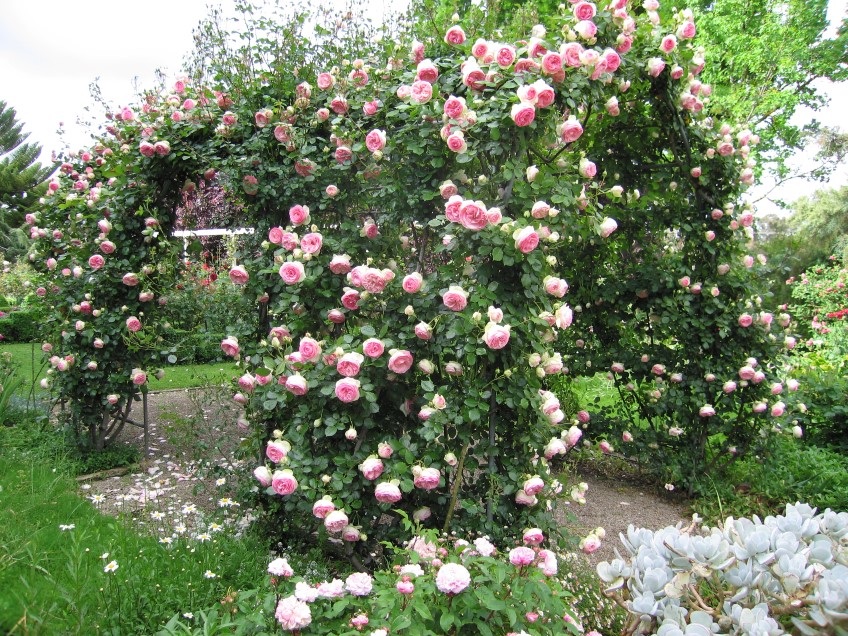
Pierre de Ronsard arbour at Al-Ru Farm. Photo - Sandra Ross
It’s time to
Select a winter flowering tree
Select a magnolia while they are in flower. Goblet-shaped
blooms come in ivory, lemon, pink, purple and bicoloured. Head to your local nursery!
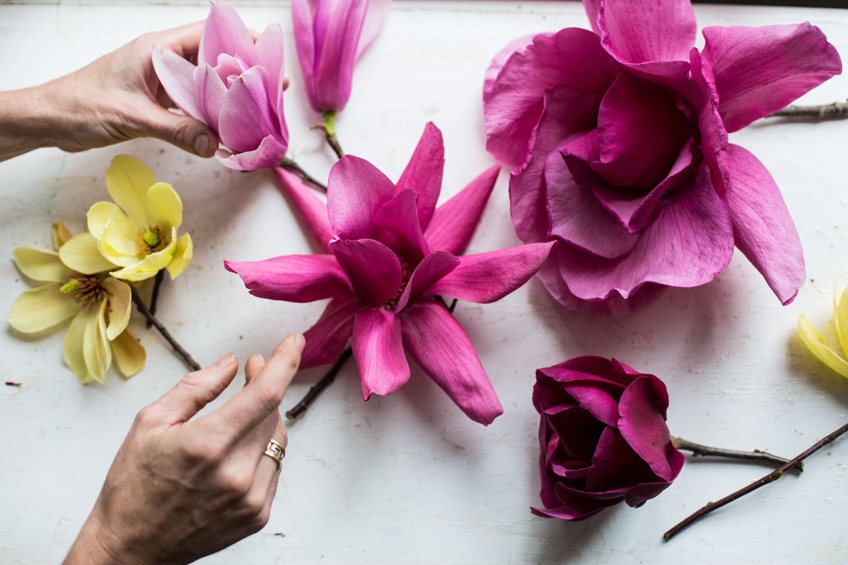
Magnificent magnolia flowers. Photo - Hannah MacCowatt
Choose a ‘birthday tree’ for your child or grandchild. Choose something flowering on their birthday and it will always to be talking point. Winter-flowering
birthday trees include deciduous magnolias, flowering peach, Michelia 'Silver Cloud' and the Taiwan cherry. You can plant it for National Tree Day
on July 31.
Transplant deciduous trees and shrubs while they are dormant. Now is the time to move frangipani. They have a small root ball so are easy to relocate to
a better position if necessary.
Attend to indoor plants: dust leaves, top up potting mix, or repot if necessary. Rotate the pot too – the plant will appreciate sunlight from a new angle.
Visit gardens to get winter plant inspiration, borrow some great ideas, then go shopping.
Enjoy the Eucharis Lilies in full bloom. ours are at their peak right now.
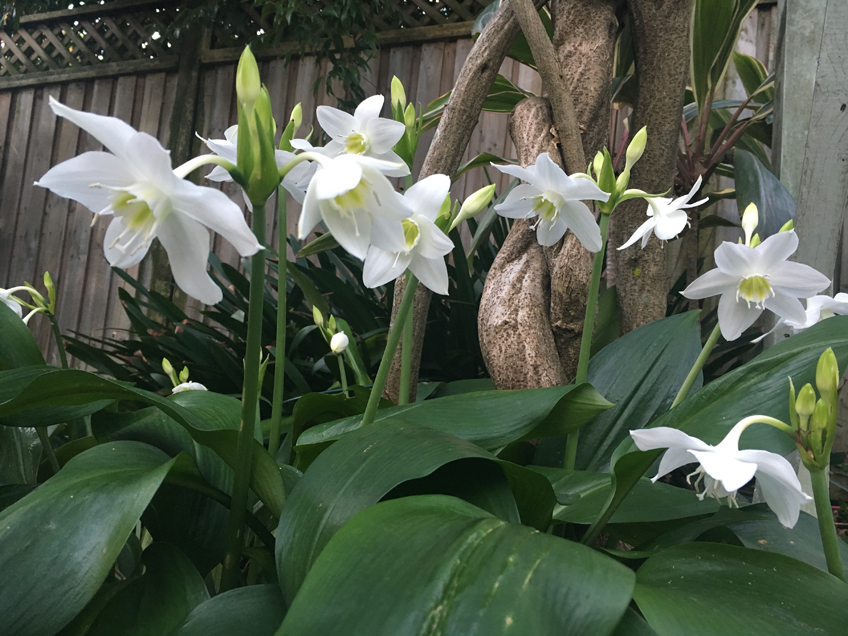
Our beautiful Eucharis Lilies. Photo - Sandra Ross
The exquisite Eucharis lily, also known as Amazon lily (Eucharis grandiflora), is a member of the Amaryllis family and was originally collected along the
Rio Magdalena. This low bulbous plant has broad, glossy green basal leaves and glistening white flowers, trumpet-shaped (like a white daffodil!) and
delightfully fragrant. They are borne in clusters of 3-6 blooms on a 40cm stalk. The Eucharist lily is a tropical plant enjoying moist-warm conditions.
It does not like cold nights, so a minimum of 5 degrees is required even in the winter.
In cold climates
Keep shade cloth free of leaf litter to ensure the health of the plants below.
Spray with caffeine spray, or scatter snail pellets to keep snails and slugs at bay.
Temperate climates
Deadhead camellias.
Aerate lawns using a garden fork. An application of watered-in dolomite lime will sweeten the soil (and neutralise the acid profile of fertilisers).
Subtropical climates
Increase plant numbers by taking cuttings of frangipani and roses.
Cut back carambola trees. They can be heavily pruned so don’t hold back!
Remove fast-growing weeds before they have a chance to set seed.
Tropical climates
When planting in the dry season, add compost to the soil and renew mulch to retain moisture.
Plant a green manure and dig in to the garden bed in 4 – 6 weeks.
When you have 10 minutes
Make use of deciduous plant prunings by using them as cuttings. Select plenty of healthy, firm, 30 cm long stems with fat buds. Dip the end of the cuttings
into hormone powder or gel (or try honey, as an alternative) and place in a dibbled hole in seed raising or propagating mix. Pot on when roots are
well-established, then swap with friends.
Bush Garden
Warrigal Greens Tetragonia tetragonioides
This Australian native ground cover was made popular in England briefly by Captain Cook. It was used by him to help fight scurvy, and taken with the crew
of the Endeavour on the trip back to Ol' blighty. Botanist Joseph Banks took seeds back to Kew Gardens during the latter half of the 18th century helping
it's popularity along.
Warrigal greens likes a moist environment. When it's happy it will form a thick carpet on the ground or climb though other vegetation and hang downwards.
The leaves of the plant are 3–15 cm long, triangular in shape, and bright green. The leaves are thick, and covered with tiny papillae that look like
waterdrops on the top and bottom of the leaves. The leaves can be blanched, sauted or tossed in salad. It takes very little effort to grow warrigal
greens and grows well in saline ground.
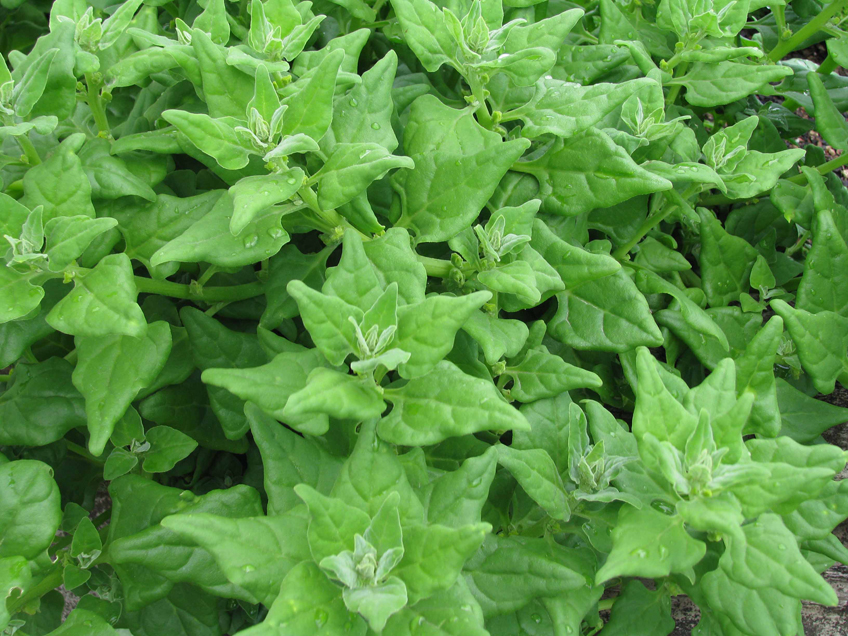
Warrigal Greens, Tetragonia tetragonioides. Photo - University of Sydney
Bugwatch
Black Sooty Mould
Black sooty mould is a fungus that grows in the sweet honeydew secreted by a variety of sap-sucking insects such as scale, aphids and whiteflies. Symptoms
include dry, black or grey “soot” on leaves, stems or trunk, and the presence of ants.
Although it does not actually draw nourishment from the host plant, severe cases prevent sunlight from reaching the leaf surface, thus reducing the plant’s
ability to photosynthesise. Consequently, sooty mould is a symptom of insect problem which must be addressed, to clear the sooty mould.
Once these insects have been eradicated and the honeydew supply stops, the mould can no longer grow. Eco-oil will control most of these pests. Spraying with a fungicide is unnecessary. Control the ants by
smearing Vaseline around the stems or spraying with Pyrethrum. The unsightly mould will eventually dry and fall off the leaves. Throwing tepid, mild
soapy water over the plant and hosing it off fifteen minutes later will release much of it from the leaves, giving the plant immediate relief from
heavy coatings.
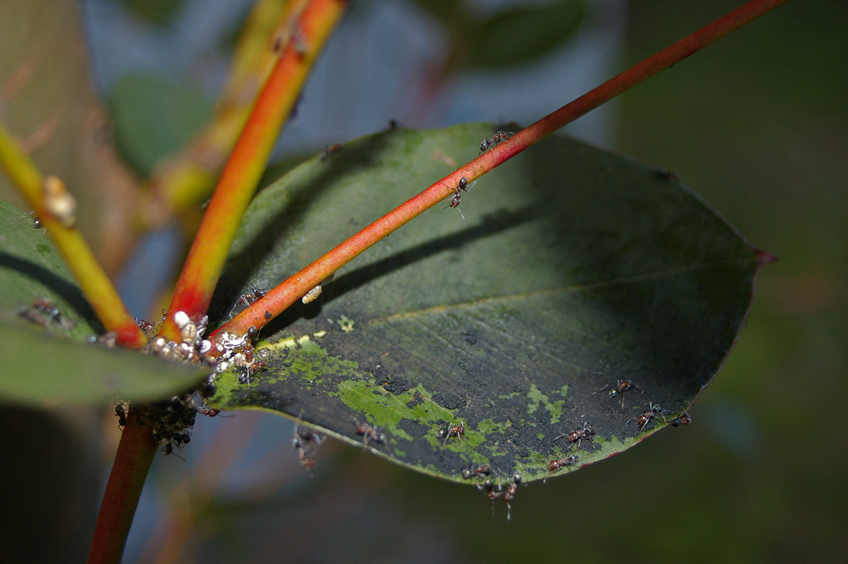
Scale and sooty mold on a Eucalyptus tree
In the Veggie Patch
Seed raising time!
If you’d like to be enjoying fresh tomatoes from your garden before Christmas, start in winter, sowing and growing indoors so that you have advanced seedlings
ready to plant out once the cold weather, and chance of frosts, has passed.
Tomatoes are my favourites. But you can also start to sow eggplant, chilli, peppers and cucumber inside now and they will all thrive.
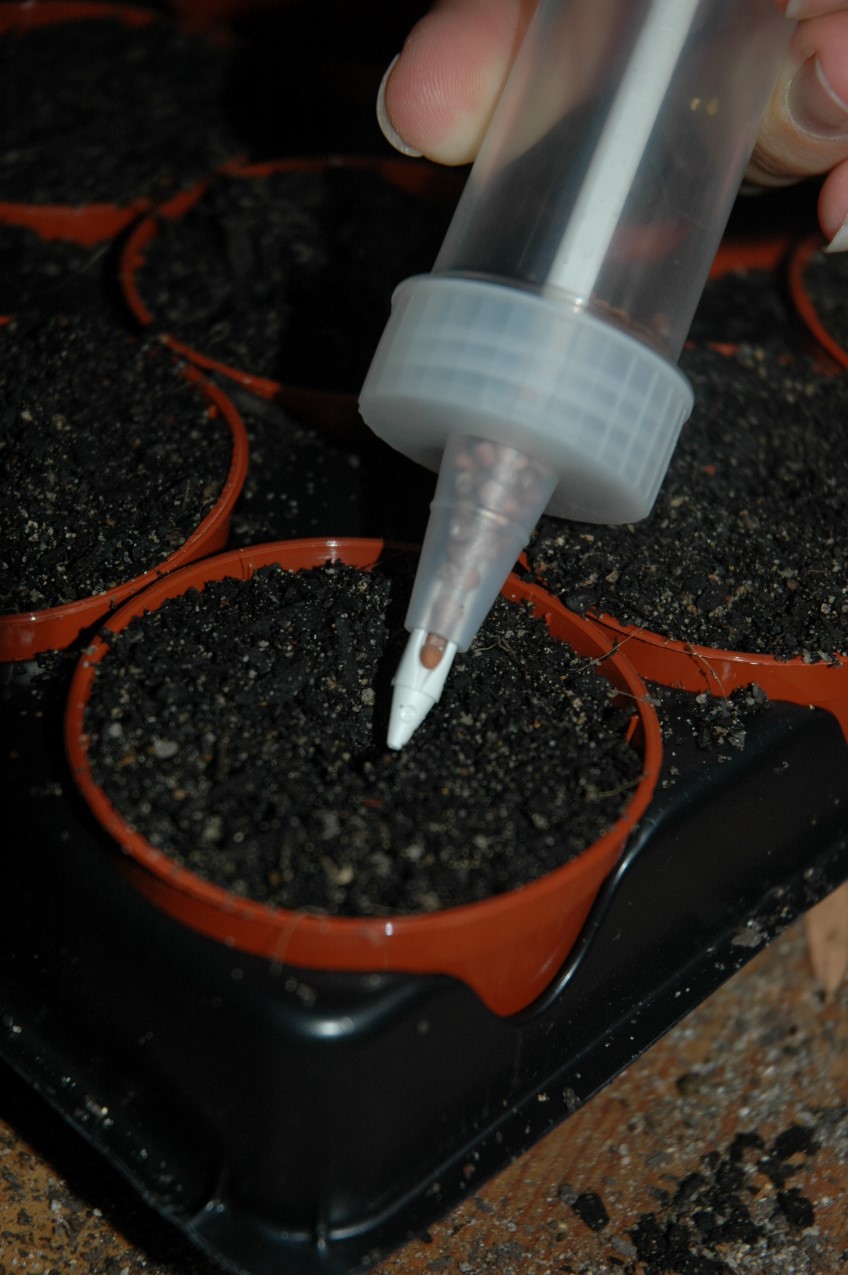
Seed sowing. Photo - Linda Ross
While not a beginner’s level skill, gardeners with some experience will have no trouble germinating and growing indoors, so give it a go this weekend.
Want to know more? Go to the Garden Clinic website and get the full story, How to: sow seeds indoors
Come away with us
NSW Spring Festivals
A plant lover’s delight as we follow the trail of flower festivals across NSW meeting friendly gardeners along the way. We start in Southern Highlands for Tulip Time, then Canberra for Floriade, then Cowra to catch the Cherry
Blossom and finally to the Leura Gardens Festival.
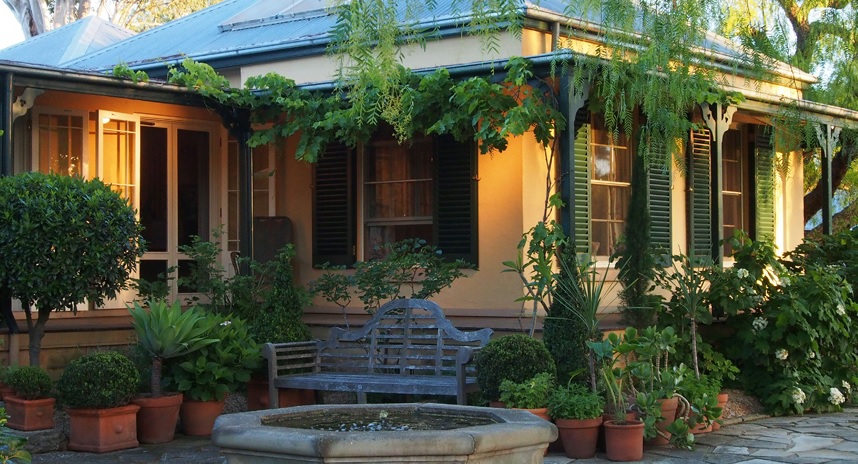
We visit the beautiful Glenmore House on the NSW Spring tour.
The Melbourne Cup
Come with us on this short break to the Melbourne Cup this summer and go behind the scenes at The Race That Stops The Nation (TM). Special visit to see the Flemington racecourse rose garden before the
race, when the roses are looking their best. Highlights include the Coombe Melba Estate, Cloudhill Garden, Werribee Mansion and the Victoria State
Rose Garden
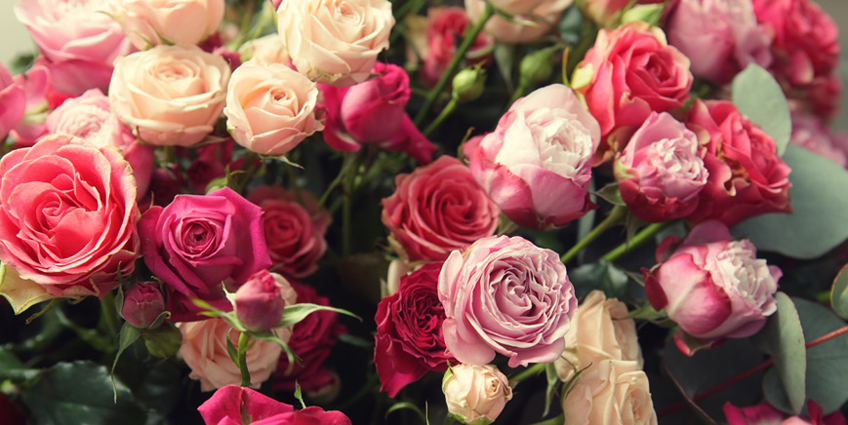
You will go behind the scenes at Flemington Race Course where the roses will be at their peak
For more information on these, or any of our tours, go to the Ross Tours website,
or call Royce or Roslyn at Ross Tours to reserve your place on 1300 233 200 for more details on the tour.
Garden News
5000 Poppies at Fromelles
Last Tuesday, 5000 Poppies along with Phillip Johnson Landscapes displayed the beautiful stemmed poppies in Fromelles at Australian Memorial Park (Cobbers)
as part of the Centenary Commemoration of the Battle of the Somme.

Sunrise over 'Cobber's' memorial, Fromelles. Photo - Claire Takacs
The battle of Fromelles on 19 July 1916 was the first time Australian forces fought on the Western Front, and remains the most tragic event in Australia’s
history. Soldiers of the newly arrived 5th Australian Division, together with the British 61st Division, were ordered to attack strongly fortified
German front line positions near the Aubers Ridge in French Flanders. The attack was intended as a feint to hold German reserves from moving south
to the Somme where a large Allied offensive had begun on 1 July. The feint was a disastrous failure. Australian and British soldiers assaulted over
open ground in broad daylight and under direct observation and heavy fire from the German lines. Over 5,500 Australians became casualties. Almost 2,000
of them were killed in action or died of wounds and some 400 were captured. This is believed to be the greatest loss by a single division in 24 hours
during the entire First World War.

In Fromelles school children sing the Australian national anthem, honouring the sacrifice of young Aussies 100 years ago. Photo - Claire Takacs
This installation has been made possible through the support of the Victorian RSL and with generous financial assistance from the Australian Government,
an anonymous private benefactor and contributions from a funding drive by radio host Neil Mitchell on 3AW, the assistance of the Victorian Government
and Qantas. Of course, the project would not be possible without the wonderful team or volunteers from Australia who will help make this happen.
Australian designer at the Singapore Garden Festival
Alison Douglas has a multi-disciplined design background.
An Industrial Design degree, experience in exhibition, toy and fashion design and a post-graduate certificate in Garden design from Melbourne University.
Landscape design, sustainability and plants are Alison's chosen medium now and in 2015 her company, Alison Douglas Design won first place at The Melbourne
International Flower and Garden Show in the Boutique Gardens category, with her creation ‘Pipe Dream’. Alison thrives on challenging sites and smaller
spaces, and is passionate about the finer details.
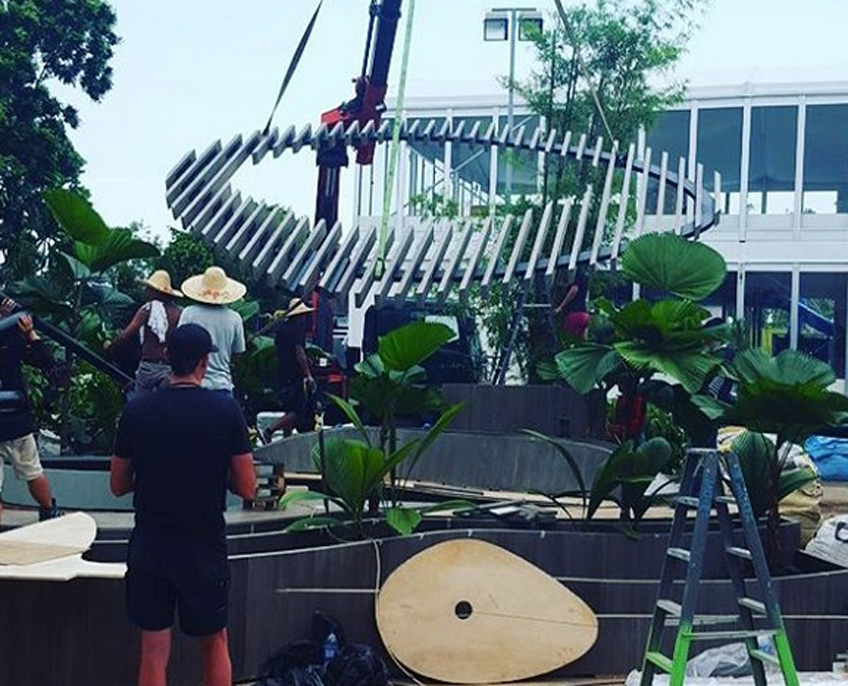
Alison's garden, 'the Butterfly Effect' under construction.
Alison is now at the end of a 10-day landscape build in a foreign country. Yet despite exhaustion she joined me on air today to talk about her latest garden,
'The Butterfly Effect'; an expression of love, with light pink colours of the mussaenda and dramatic highlights using ginger and liguilaria and featuring
dramatic forms using built timber structures and bamboo, a sunken lounge with water feature, all under two huge butterfly wing-shaped awnings. The
Butterfly Effect is Alison's entry in the Singapore Garden Festival.

Mussaenda 'queen sirikit'
Alison is proud to have been selected to participate in the 2016 Singapore Garden Festival as one of the designers in the prestigious Landscape Design
category.
We wish Alison well, and i look forward to seeing this incredible garden up close next week with my group on the Singapore tour.
The Potted Garden
Liliums in pots
Liliums can be grown very successfully in pots and brought into the garden at their peak and stored safely away whilst dormmant.
When planting Lilies in pots simply choose a pot with a size and shape that will complement the height of the flowers. Make sure that the pot has excellent
drainage, and can easily accommodate the Lilium bulbs without them touching the sides of the pot.
Use the best quality potting mix you can buy, preferably one with a slow release fertiliser. Plant your Lilium bulbs twice as deep as they are high, then
water them in. Water your Lily bulbs regularly once they are actively growing, so they don’t completely dry out. If you give them a little extra pampering,
such as adding a liquid fertiliser fortnightly over summer, this will ensure the best and longest lasting flowers possible.
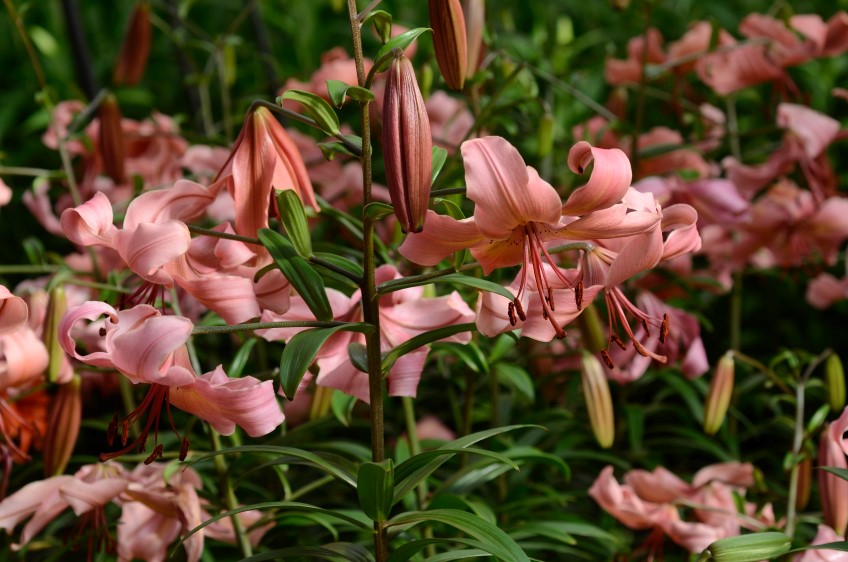
Lilium 'Pearl Jessica'. Photo - Linda Ross